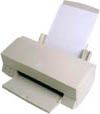Finding and Fixing Errors in Parallel Structure
Understand the problem.
A list of items must maintain parallel structure. To do this, use consistent grammatical units. If the first item is a noun, then the following items must also be nouns; if the first item is a verb, then make the other items verbs as well.
Nonparallel structure has inconsistent format:
At the garden store, Larissa bought
,
, and
.
At the garden store, Larissa bought pink plastic flamingos, ceramic gnomes, and then she impulsively added a concrete mermaid to her cart.
In parallel structure, the correct way to write, all items match:
At the garden store, Larissa bought
,
, and
.
At the garden store, Larissa
,
, and
.
At the garden store, Larissa bought pink plastic flamingos, ceramic gnomes, and a concrete mermaid.
At the garden store, Larissa bought pink plastic flamingos, rescued ceramic gnomes from the sale bin, and impulsively added a concrete mermaid to her cart.
Know the solution.
Once you discover a nonparallel item, you have two options. First, you can make it conform to the other grammatical items in the list.
Read this example:
In the waiting room, we spent an hour reading old magazines, eating stale cookies from the vending machine, and we wiggled on the hard plastic chairs.
Reading old magazines and eating stale cookies are participle phrases; we wiggled on hard plastic chairs, however, is a main clause.
If we fix the nonparallel item, we have consistency:
In the waiting room, we spent an hour reading old magazines, eating stale cookies from the vending machine, and wiggling on the hard plastic chairs.
Or we can alter the first two items to create this version instead:
In the waiting room, we read old magazines, ate stale cookies from the vending machine, and wiggled on the hard plastic chairs.
Recognize these special cases.
Not only ... but also, either ... or, and neither ... nor all require special attention when you are proofreading for parallelism. These correlative conjunctions require equal grammatical units after both parts of the conjunction.
You can have two main clauses like this:
Not only did Jerome buy flowers for his mother, but he also purchased a bouquet for Yolanda, his wife.
For a shorter sentence, use two prepositional phrases:
Jerome bought flowers not only for his mother but also for Yolanda, his wife.
Or you can have two nouns as this version does:
Jerome bought flowers for not only his mother but also Yolanda, his wife.
©1997 - 2024 by Robin
L. Simmons
All Rights Reserved.
